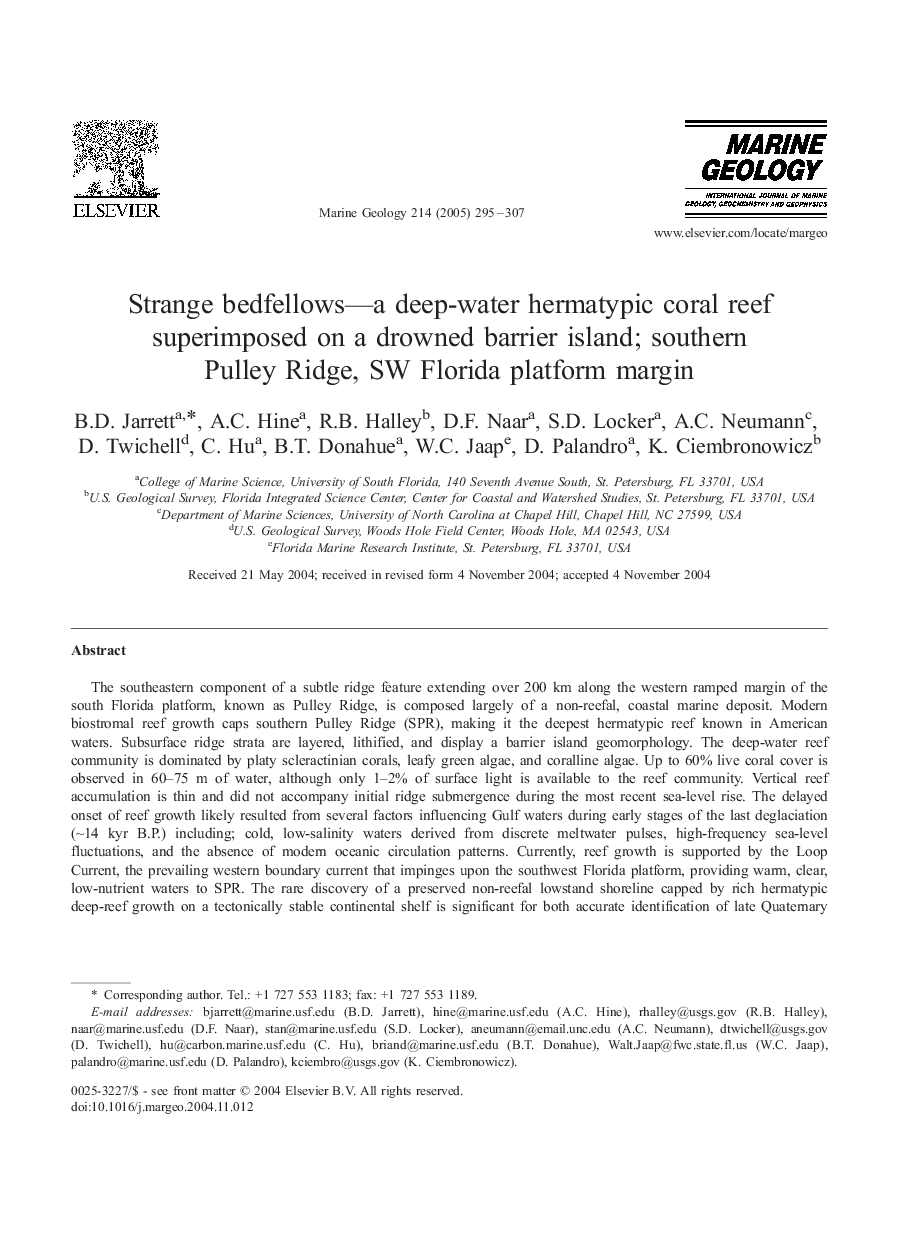| Article ID | Journal | Published Year | Pages | File Type |
|---|---|---|---|---|
| 9532763 | Marine Geology | 2005 | 13 Pages |
Abstract
The southeastern component of a subtle ridge feature extending over 200 km along the western ramped margin of the south Florida platform, known as Pulley Ridge, is composed largely of a non-reefal, coastal marine deposit. Modern biostromal reef growth caps southern Pulley Ridge (SPR), making it the deepest hermatypic reef known in American waters. Subsurface ridge strata are layered, lithified, and display a barrier island geomorphology. The deep-water reef community is dominated by platy scleractinian corals, leafy green algae, and coralline algae. Up to 60% live coral cover is observed in 60-75 m of water, although only 1-2% of surface light is available to the reef community. Vertical reef accumulation is thin and did not accompany initial ridge submergence during the most recent sea-level rise. The delayed onset of reef growth likely resulted from several factors influencing Gulf waters during early stages of the last deglaciation (â¼14 kyr B.P.) including; cold, low-salinity waters derived from discrete meltwater pulses, high-frequency sea-level fluctuations, and the absence of modern oceanic circulation patterns. Currently, reef growth is supported by the Loop Current, the prevailing western boundary current that impinges upon the southwest Florida platform, providing warm, clear, low-nutrient waters to SPR. The rare discovery of a preserved non-reefal lowstand shoreline capped by rich hermatypic deep-reef growth on a tectonically stable continental shelf is significant for both accurate identification of late Quaternary sea-level position and in better constraining controls on the depth limits of hermatypic reefs and their capacity for adaptation to extremely low light levels.
Related Topics
Physical Sciences and Engineering
Earth and Planetary Sciences
Geochemistry and Petrology
Authors
B.D. Jarrett, A.C. Hine, R.B. Halley, D.F. Naar, S.D. Locker, A.C. Neumann, D. Twichell, C. Hu, B.T. Donahue, W.C. Jaap, D. Palandro, K. Ciembronowicz,
